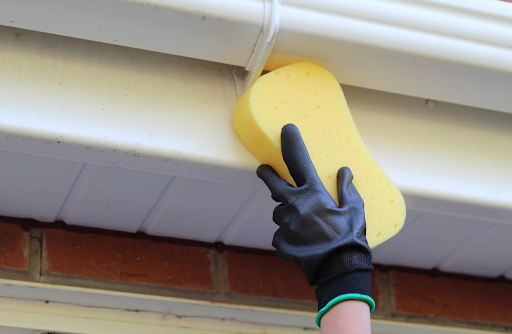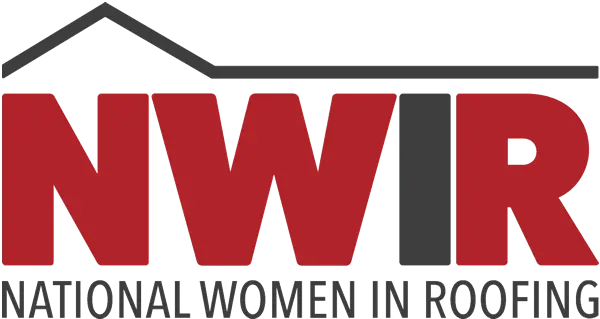What Is a Fascia Board?

When it comes to your home’s roofing system, there’s more to it than just shingles and gutters. One of the most important and often overlooked components is the fascia board. But what is a fascia board? And why is it essential to your roof’s integrity, especially in Florida’s high-humidity, storm-prone environment?
The fascia board is the long, straight board that runs along the lower edge of your roofline, directly behind the gutter. It acts as a finishing edge that gives your roof a clean appearance, but more importantly, it supports the bottom row of roof tiles or shingles and provides a base for your gutters. A properly installed fascia roof system helps protect your home from water damage, pest intrusion, and structural decay. In this guide, we’ll cover everything you need to know about roof fascia, from what it does and what it’s made of to signs of damage and replacement tips.
What Is Fascia on a Roof?
The fascia on a roof is the vertical board mounted at the point where the roof meets the outer walls of the house. It’s part of the home’s overall roof edge system and is positioned just underneath the roofline. This board plays a crucial role in completing the roofing structure and forming a smooth transition between the roof and the exterior walls.
While its sleek profile adds aesthetic value by hiding rough edges and exposed rafters, the fascia board serves an important function: supporting the bottom edge of the roof and holding the gutter system firmly in place. Without a strong fascia board roof system, gutters can sag or fail altogether, and water could seep into the underlying structure of your home.
Why Is the Fascia Board So Important?
In Florida, where your home endures intense heat, salt air, wind, and torrential rain, having a sturdy and well-maintained fascia roof system is essential. The fascia is often the first line of defense against water intrusion. It directs runoff from the roof into the gutter system, helping to protect the eaves, soffit, and interior attic space.
When gutters overflow or water backs up during heavy rains, the fascia board can become saturated. Over time, this can lead to rot, warping, and even structural damage if not addressed. A strong fascia also keeps pests like birds, bats, and insects from slipping into the open roofline and nesting inside.
What Is Fascia Board Made Of?
Fascia boards are available in several different materials, each with its own set of benefits and maintenance needs. Let’s break down the most common types:
1. Wood Fascia
Traditional and widely used, wood fascia is typically made from pine, cedar, or redwood. While it’s affordable and easy to install, it does require regular maintenance like painting or sealing to prevent rot, especially in humid or coastal regions like Southwest Florida.
2. PVC Fascia
PVC or vinyl fascia is a low-maintenance alternative that resists moisture and insects. It doesn’t rot, warp, or need repainting, making it a popular choice for homeowners looking for durability with minimal upkeep.
3. Aluminum Fascia
Aluminum is often used to cover wooden fascia boards to improve weather resistance. It’s lightweight, rust-resistant, and easy to color-match with existing trim and gutters. This material is especially helpful for extending the life of wood fascia.
4. Composite Fascia
Made from recycled wood and plastic, composite fascia offers the look of natural wood with greater resistance to decay. It tends to be more expensive but pays off with durability and fewer maintenance requirements.
5. Fiber Cement Fascia
Fiber cement fascia is highly resistant to fire, moisture, and insects. It can be painted to match your home’s exterior and lasts for decades when installed correctly. It’s a great choice for Florida homes due to its moisture resistance.
Fascia vs. Soffit: What’s the Difference?
Homeowners often confuse the fascia board with the soffit, but these are two different components of your roofing system.
- The fascia is the vertical board along the edge of the roof where gutters attach.
- The soffit is the horizontal underside that connects the edge of the roof to the wall of the house.
While the soffit allows for attic ventilation, the fascia serves as structural support and water protection. Both elements work together to protect the edges of your roof and keep the entire system functioning properly.
Common Problems with Fascia Boards
Because fascia boards are so exposed, they’re vulnerable to a range of problems, especially in Florida’s climate. Some of the most common issues include:
- Water damage from overflowing gutters or backed-up drainage
- Rotting wood due to prolonged moisture exposure
- Pest infestations from termites or nesting animals
- Peeling paint or discoloration from UV exposure
- Sagging or detached gutters due to damaged fascia
Ignoring these issues can lead to bigger structural problems, including roof leaks and mold growth. That’s why regular inspections are key to catching fascia issues early.
Signs You Need Fascia Board Replacement

Not sure if your fascia needs attention? Here are a few red flags to look out for:
- Visible cracks, splits, or soft spots on the fascia surface
- Rusty nails or loose gutter brackets pulling away from the fascia
- Peeling paint or discoloration indicates water damage
- Drooping or warped rooflines along the edge of your home
- Water stains or streaks on siding near the roofline
If you notice any of these signs, it’s time to schedule a professional roof inspection. At King Roofing, we include fascia inspections as part of our comprehensive roofing services.
How Is Fascia Board Repaired or Replaced?
When fascia damage is minor, such as a small crack or a section of peeling paint, it may be possible to repair the area by sealing, repainting, or replacing just a portion of the board. However, more severe damage, like rot or structural weakening, usually requires a full replacement of the affected section.
Fascia board replacement involves removing the damaged boards, inspecting the underlying rafters, and installing new boards with protective coatings. It’s also an excellent opportunity to upgrade to more weather-resistant materials like PVC or composite fascia. If your gutters are outdated or failing, this is also a smart time to replace them.
Roof Fascia Maintenance Tips for Florida Homes
Maintaining your roof fascia doesn’t require a lot of effort, but a little attention goes a long way in extending its lifespan:
- Clean your gutters regularly to prevent water backup
- Inspect fascia and soffits annually, especially after storms
- Repaint or reseal wood fascia every few years
- Trim tree branches near the roofline to reduce impact damage
- Check for pests and seal entry points promptly
These simple steps will keep your fascia looking great and functioning as intended.
Do All Homes Have a Fascia Board?
Most modern homes include a fascia board roof system as part of standard construction, but older homes may have exposed rafters or alternative trim configurations. If your home lacks a fascia board, you may be more prone to water damage and pest issues. Adding fascia during a roof upgrade or gutter installation can enhance both protection and curb appeal. If you have any questions about your fascia board or your roof, feel free to reach out to King Roofing at (239) 592-3044!
Frequently Asked Questions
Q: What is a fascia board?
A: A fascia board is the horizontal board that runs along the edge of your roof, supporting your gutters and protecting the roofline from water and pests.
Q: What is fascia on a roof used for?
A: The fascia supports the bottom layer of shingles or tiles and holds the gutter system in place. It also shields the edge of the roof from moisture damage.
Q: How long does a fascia board last?
A: Depending on the material, fascia boards can last 15 to 30 years. PVC and aluminum fascia tend to outlast traditional wood in Florida’s humid climate.
Q: Can I replace the fascia board without replacing the whole roof?
A: Yes. Fascia boards can be repaired or replaced independently, though it’s often wise to evaluate the entire roof edge system when damage occurs.
Q: How do I know if my fascia board is bad?
A: Look for sagging gutters, peeling paint, soft spots, or visible cracks. These are signs of water damage or structural weakening and should be addressed quickly.












